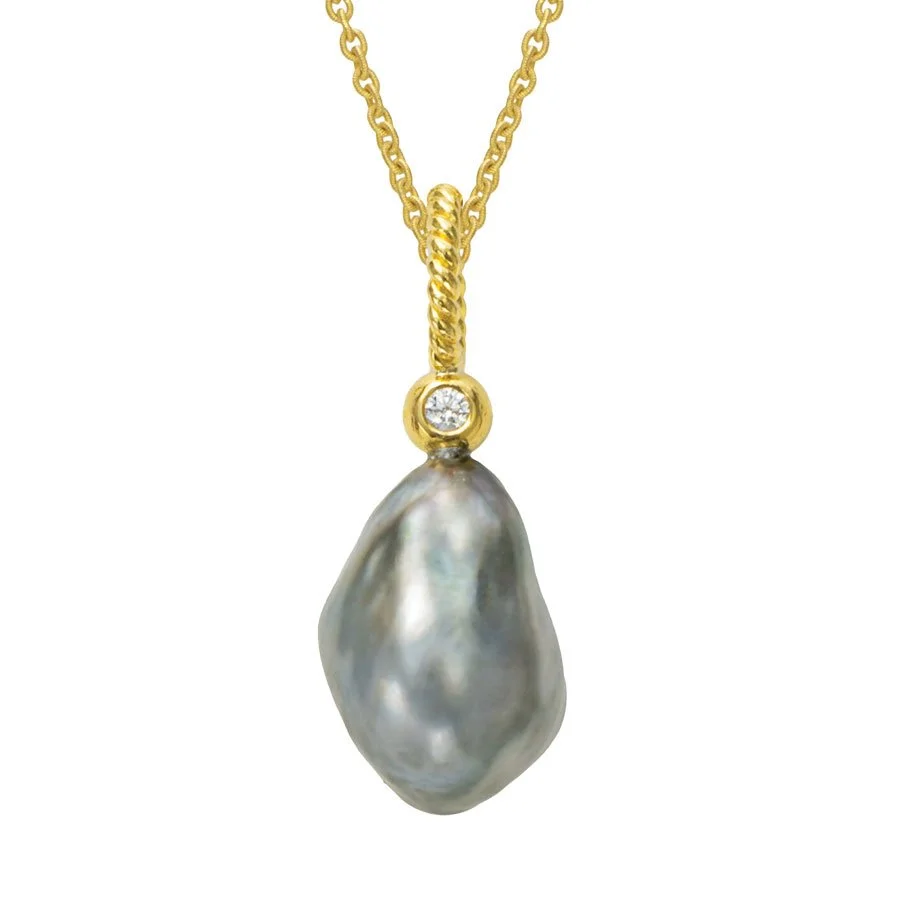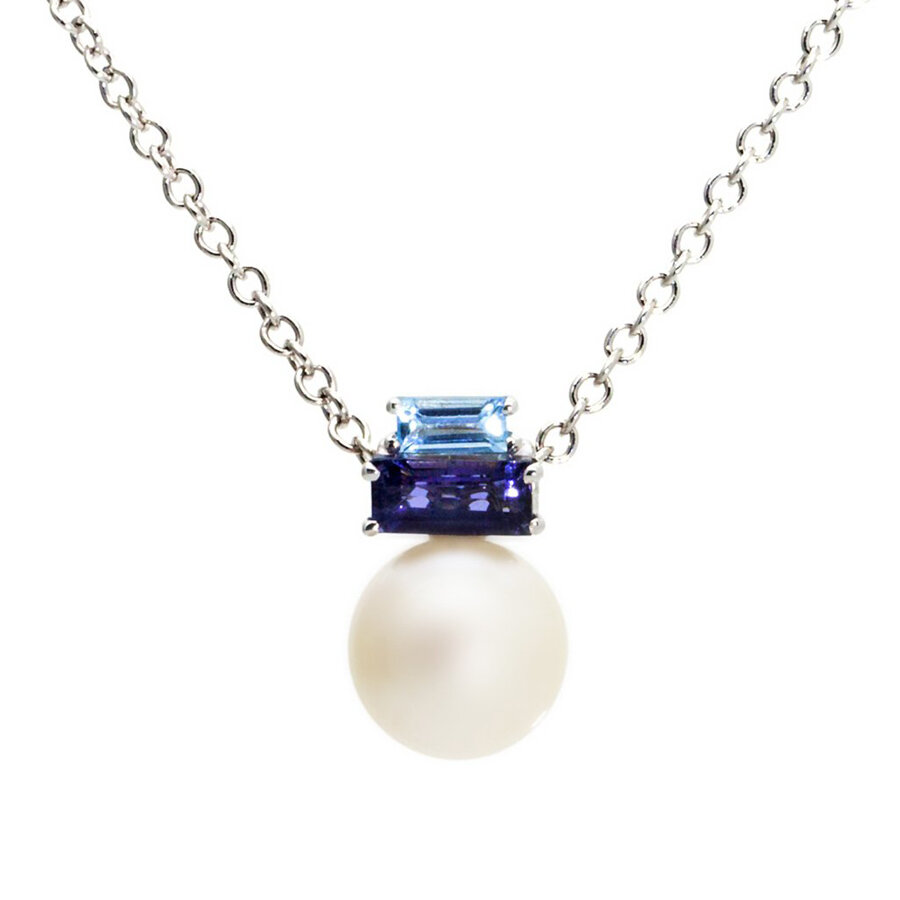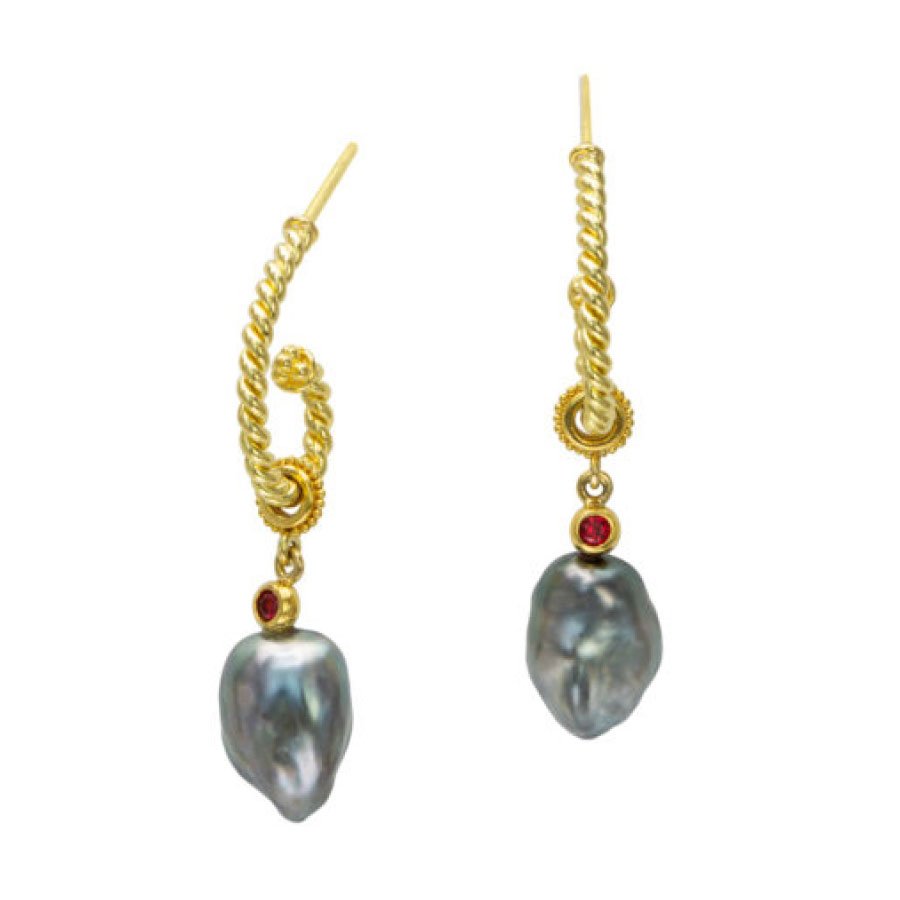PEARL JEWELRY WITH INTENTION AND CONNECTION
What to know about PEARL JEWELRY
First, pearls are not stones, but luminous, organic gems! They are the alluring result of a mollusk protecting itself from an invasion of an irritant!
There is a significant difference between natural and cultured. Most pearls we see in jewelry today are cultured. A further distinction exists between freshwater and saltwater, which is reflected in price points, due to rarity.
Get the skinny on pearl and shop a curation of intentional jewelry, thoughtfully designed by women…

SHOP
DESIGNER PEARL JEWELRY
What are the metaphysical properties of pearl?
This gemstone attracts sincerity, integrity, and focus.
Just as our ancient ancestors believed gemstones were imbued with special properties, such as protection, wisdom, or courage, today we are empowered by the metaphysical properties of gemstones to manifest what we wish to create.
You may be interested in our guide to manifest your intentions with gemstones and jewelry!
QUEEN OF GEMS!
Our ancient ancestors discovered this delicate, luminous sphere while seeking food from the sea - and pearls have been a global sensation ever since.
It is believed they were gifted among Chinese royalty as early as 2300 BC. The black pearl in particular symbolized wisdom. The earliest archeological evidence of pearl jewelry is a necklace found in the sarcophagus of a Persian princess dating to 420 BC.
Beyond the legend of Cleopatra “drinking” her most priceless pearl, these treasures adorned jewelry, gowns, and even furniture of high-status citizens throughout the ancient Greek and Roman world.
To multiple cultures, religions, and throughout time, these “gems” have been synonymous with purity and perfection.
Let’s not forget that throughout history, they were worn by women and men and we are seeing men rocking pearls again today!
We’ve outlined points to help you understand value and what to ask about pearl jewelry.
Seeking personalized shopping support when investing in your jewelry collection?
Get expert guidance for jewelry with intention and connection!
Discover what to know - and jewelry designed by WOMEN!
As an international grading system does not exist, each producer, wholesaler, and retailer sets its own standards. Most use the traditional A (lowest) through AAA (highest) grading scale.
The industry does recognize seven different factors to assign value: nacre quality, luster, size, shape, color, surface, and matching.
NACRE: Nacre is the outer coating of material that makes a pearl look like a pearl. The quality of the nacre involves how thick and dense it is. Thickness is contingent on how long the mollusk is in water before it is harvested. The minimum thickness is 0.4 millimeters and anything less will eventually peel. When harvested in the coldest season of the year, the nacre is layered at a slower rate because mollusks’ metabolism slows. The result is a dense, compact nacre and a higher luster.
Mollusks are left in water for at least ten months, although at this stage the nacre is thin with lower than average luster. Most mollusks are in the water for 18 or 24 months.
LUSTER: Luster is the most important value factor, which is determined by the amount and the quality of light reflected from the surface and just under the surface. Fine luster is a sharp, shiny reflective surface, whereas low luster is dull or chalky reflections. The finest luster exhibits a prismatic effect, due to light passing through layers of nacre and reflecting back through the surface - also known as “orient”.
SIZE: The larger it is, the greater the value when all other factors are equal.
SHAPE: Most mollusks are nucleated with a perfectly round bead implant, resulting in a round (the most prized) or nearly round shape. Often, other shapes like drop, oval and baroque occur and can be quite valuable - especially baroque pearls. Baroque pearls are fancy shapes that are asymmetrical and free-form.
COLOR: Color is dictated by the lip color of the mollusk, as well as the species of mollusk tissue that is grafted around a nucleus. Pearl color is comprised of two components: body color and overtone. Body color is the primary color caused by pigment versus light interference. Overtone is the secondary color that appears due to nacre layers interfering with light and splitting the components.
SURFACE: Just like our fingerprints, the surface of each sphere is unique to its individual growth characteristics. Bumps, dimples, scratches, dull patches, and spots that may be present on the surface are known as “blemishes”. The fewer blemishes (when all other factors are equal), the more valuable it is.
MATCHING: Because no two are identical, a lot of time can be involved in composing a matching pair in terms of size, quality, color, and shape. Even more so with a finely matched single strand. It requires time and a skilled technician to sort through thousands of pearls to identify the closest match. For the rarest of the rare, this could take years!
MODERN PEARL JEWELRY WITH STAND-OUT STYLE
Pearl jewelry can amplify your story and style, ensuring you feel confident in any room you enter. I have hand-selected pieces from coveted designers that will amplify your inner power.
As your fine jewelry guide, I help you find the perfect piece meant for you… or a luxury gift for your wife or someone you love!
Pearls are cultured around the world where the water’s ecosystem is pristine, healthy, and rich in various forms of plankton and nutrients for mollusks to thrive. As filter feeders, they absorb any impurities in the water, so this affects the health of the mollusk and therefore their quality.
It is important to note that freshwater mollusks can produce many pearls (sometimes dozens) at once over a single growth cycle, while saltwater mollusks produce a SINGLE pearl (such as a Tahitian pearl) over 5 - 7 YEARS.
What color can pearls be?
Different species inhabit different regions and produce a diverse array of colors, shapes, and sizes. Below is a list of a few.
FRENCH POLYNESIA = BLACK TAHITIAN: Interestingly, these pearls are rarely black! Instead, they exhibit an array of body colors and rainbow overtones with a play of color caused by the pearl’s iridescence. The most highly valued exhibit peacock overtones with a stationary, colorful shimmer as the pearl is turned. Black Tahitian pearls are not necessarily from Tahiti, but from the greater expanse of French Polynesia and Cook Islands.
AUSTRALIA = SOUTH SEA: Pearls farmed south of Japan are considered “South Sea”. They are large, luminous, and silver-white. Think of them as the Rolls Royce of cultured pearls - and among the world’s most prized.
NOTE: Pearls grown on Palawan in the Philippines and in various parts of Indonesia also qualify as South Sea.
PHILIPPINES = GOLDEN SOUTH SEA: Rare, large, and extraordinarily valuable. The rarest of the rare are those that display a deep 22 karat golden body color. These most sought-after treasures are grown in the few locations where tropical waters are more mild (around 80°F - 88°F). Even fewer hatcheries exist in Indonesia and Australia.
JAPAN = AKOYA: White, round and lustrous, these classics have been revered for more than 100 years. The finest emit a glow rarely found in other cultured varieties. It was this pearl that Mikimoto began to culture with his 1916 patent, enabling more people to enjoy these luminous wonders.
CHINA = FRESHWATER: China is a market leader in the freshwater industry. Two distinctive variations are the traditional (non-beaded) and “new” nucleated. The biggest difference is the former (grown with a tissue graft) rarely grows larger than 10 millimeters and the latter (grown with a nucleus) are “small” at 12 millimeters and can reach more than 20 millimeters in diameter and 40 millimeters in length! New freshwater pearls are produced in every natural color and an infinite number of innovative shapes, such as the “fireball” and “cultured soufflé”.
KESHI: Though “keshi” is Japanese for “poppy seed”, this refers to luminous little “accidents” that can occur in any cultured mollusk around the world. They may be the result of a dislodged nucleus, with the remaining tissue graft becoming a pearl - or - some other natural occurrence, the way that natural pearls form in the wild. While they do not have a nucleus, they are not considered “natural” due to human intervention. Very often they are small and have a freeform shape.
What determines the color of a pearl?
Two factors determine color. One is the tissue of the donor mollusk and the other is the tissue of the host mollusk. Think of it as a “mom” and “dad” contributing their DNA to create a new pearl!
What does sustainably and ethically sourced jewelry mean?
I believe in humanizing supply chains as much as possible to ensure you have certainty your jewelry investment aligns with your values.
Just as we know where our food comes from and who made our clothes, why not jewelry?
Women and men at the forefront of this global conversation will have slightly different perspectives, but there is a shared ethos: responsible sourcing.
This encompasses traceability, conflict-free, protecting people, their skills, and the environment - be it land or sea.
All The Brilliants is a proud member of the United Nations Fashion and Lifestyle network, aiming to accelerate solutions for achieving the Sustainable Development Goals (SDGs) by engaging the fashion and lifestyle sectors, fostering collaboration, and promoting sustainability.
Nearly all cultured pearls in the market have been treated after harvest - to varying degrees. Bleaching is one treatment that is a standard, accepted practice to achieve a white color. Though it is not necessary to disclose bleaching, other treatments that alter the appearance should be noted.
Such treatments are irradiation, heating, dying, filling, and waxing.
One treatment that is not acceptable is “coating,” to enhance luster. Think of it as a coat of clear nail polish, which may eventually chip or peel, revealing the low-luster pearl below it.
Knowledge is power and any of the above treatments impact market value.
The MOHS SCALE:
How hard is PEARL?
very soft - wear with care
The Mohs scale of hardness is important to consider when choosing a particular stone for a particular kind of wear.
It is the degree of mineral “hardness”, measured by the resistance which a smooth surface offers to abrasion: 1 (soft) to 10 (hard). For example, an 8 will scratch a gemstone that is a 7 or below. Simply put, the softer the stone, the more careful you need to be about wearing that stone in jewelry that may be exposed to more wear.
Do pearls scratch easily?
YES!
This is a question you’re most likely to ask when buying gemstones and jewelry. Knowing how hard it is (or any other stone) will help you to determine whether it is an everyday gemstone or an occasional piece.
At a “2.5 - 3”, this gem is very soft. As it is more susceptible to scratches or damage with accidental bumps, choosing kinds of jewelry (i.e. necklaces or earrings) that will encounter less contact with harder surfaces is a good option, as are cocktail rings. It is not the most durable gemstone for an every day or engagement ring, unless it is thoughtfully designed to really protect it.
Because quartz is a “7” on the Mohs scale (harder than pearl) and can be present in common dust, be sure to wash pearl jewelry under warm water prior to wiping off dust to prevent scratching.
JOIN OUR COMMUNITY OF WOMEN LEADERS
Sign up: Step into our inner circle for style tips to amplify your visibility, inspiring conversations with women leaders, and insider access to jewelry that celebrates your story and inner power.
How to care for pearl jewelry
A few jewelry care basics can keep your pieces looking their best, avoid damage and loss of gemstones.
WEAR: Pearls “want to be worn”. Why? Wearing them prevents dehydration. When dressing for day or night, jewelry should be the last thing on and the first thing off. Contact with chemicals such as fragrance, hairspray, nail polish remover, household cleaners, and chlorine can harm jewelry.
Remove jewelry when swimming, cleaning, gardening, or playing sports, as activewear can damage or loosen settings and weaken the silk of pearl strands - resulting in the loss of stones.
CHECK SETTINGS AND STONES: Inspect jewelry before wearing it to check if pearls are scratched, chipped, or appear loose settings or strands.
CLEANING: All precious metals, gemstones, and pearls should be cleaned regularly, but require different care. For example, ultrasonic cleaners can shatter pearls, crack opals, or diminish their appearance. Do not use steam or ultrasonic cleaners with pearls.
● For pearls, wipe them with a damp, soft cloth as needed. Water and wear over time will weaken silk thread, so check strands annually and restring every 1 - 3 years as needed.
● A soft polishing cloth will keep any precious metal looking its best.
● Take any investment pieces to a trustworthy professional jeweler once a year for a thorough cleaning and inspection.
● See our full guide to How To Clean Fine Jewelry.
STORAGE: Keep pearl jewelry individually stored in a pouch or box to avoid scratches and abrasions from other gemstones, as well as general tangles and dents. Chemicals, low humidity, and excessive hot/cold conditions can damage them.
INSURANCE: For any jewelry of significant value, be sure to have it appraised, file any provenance and gemstone report in a secure place, and be sure to have it insured.
WANT PERSONALIZED SHOPPING SUPPORT?
All The Brilliants’ jewelry concierge guides you in selecting:
editing what you already have in your jewelry box
advising you on wardrobe needs to help you be fully dressed with confidence
sourcing jewelry that amplifies your unique style or fine jewelry gifts for someone you love
Let’s connect for intentional jewelry that brings what’s inside out!






























